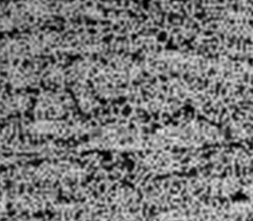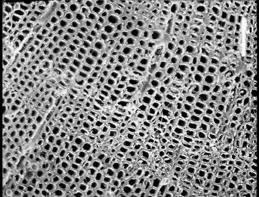|
There are various Pros
& Cons regarding Composites Vs Wood.
Just remember there are other forces at work besides
what you read here.
The purpose of
this article is to educate the reader on composites,
and why they are a compelling alternative to wood.
Composites work very well with wood, or can replace
wood if needed.
For example here in Las Vegas we are firmly
recommending
Rainsong acoustic guitars as the absolute best
sounding instruments that won't give you problems
with drying out or being affected by the local heat.
The word
“composite” means two or more materials combined to
form a composite material. Fiber reinforced
materials, commonly referred to as composites, have
been around for centuries. Early settlers found that
by combining straw with mud, the composite was much
stronger. Highways & bridges are composite because of
the steel rebar embedded in the concrete. In today’s
modern age, light weight composites in the form of
fiber reinforced resins have become the standard in
sporting goods and aerospace applications.
Modern
composite materials use high strength fibers made from
a variety of materials such as fiberglass, carbon,
aramid, boron, and others. The most popular is carbon
fiber, due to its high stiffness, high strength, and
light weight. Carbon fibers may be manufactured from
polyacrylonitrile (PAN), pitch, or rayon precursor
materials by high-temperature (2000 to 35000 F)
carbonization or graphitization processes, hence the
name “graphite.”
Carbon fiber is
useless without a resin binder. Typically, carbon
fibers are coated with an epoxy resin which surrounds
the fibers and holds them in place. This material is
known as a pre-preg, which stands for
“pre-impregnated” meaning the fibers have been
embedded into the epoxy resin.
With
pre-preg materials, the carbon fibers are
unidirectional, meaning all the fibers run in the same
direction parallel to each other. This is the most
efficient arrangement of fibers. Fiber-Sonic,
takes the pre-preg sheets and cut them to different
shapes and at different fiber angles to create a
“lay-up” specific to each individual product. For
example, they can change the stiffness
of a neck by simply
changing the fiber angle. We can also combine
different fibers to create a hybrid composite, which
has beneficial properties of both. In
addition, once the recipe is optimized the composite
structure is repeatable part after part, ensuring
consistent high quality time after time.

This is what an
ideal composite structure looks like up close,
magnified 500X. The fibers should be distributed in
the resin matrix uniformly. This allows the matrix
material to transfer the load to the fibers in a
uniform manner, resulting in an efficient structure.
Wood has a
fiber structure very similar to a composite material.
Wood is comprised of a fibrous structure of cellulose,
which has a grain to it where the wood is stronger in
one direction than another. This is because the
cellulose fibers are parallel to each other, much in
the same way unidirectional composites are formed.
Wood comes in a
variety of species, all which have different grain structures, densities, strengths, and
beauty. Even the same species of wood varies based on
growing conditions. Furthermore, within the same
tree, the properties of wood can vary. Despite these
inconsistencies, wood is an excellent material for
musical instruments, but has limitations:
different grain structures, densities, strengths, and
beauty. Even the same species of wood varies based on
growing conditions. Furthermore, within the same
tree, the properties of wood can vary. Despite these
inconsistencies, wood is an excellent material for
musical instruments, but has limitations:
Wood
is a natural material, meaning that variance can occur
from batch to batch. Trees grow at different rates
depending on weather, so every batch can be different.
Wood is
affected by moisture, so factories must treat the wood
& store in temperature & moisture controlled
environments while manufacturing the product. Once
the product is shipped, it remains susceptible to
these environmental conditions, which can cause the
wood to warp, crack, and change dimension.
Wood can expand
and contract with temperature & moisture, effecting
the production of wood parts, and affecting the sound
of musical instruments. It is easy to see why wood
instruments require constant tuning.
The fiber
orientation of wood is limited to what nature gives
us. It is possible to create a laminate of different
plies of wood at different grain orientations (e.g.
plywood) but the above deficiencies still exist.
Fiber Sonic,
can design in the exact tone desired by changing the
stiffness and weight of the component. Sound travels
through a structure as a function of stiffness and
weight, so it is possible to “dial in” the optimal
combination for every application. With fiber
reinforced composites, there are numerous ways to
adjust the tone of the product:
Type
of fiber used:
You can use very stiff and light carbon fibers, or
heavier and more flexible glass fibers, or a
combination of each to optimize the performance and
cost.
Orientation of fiber
angles:
A low angle like 0 degrees maximizes stiffness, where
an intermediate angle such as 45 degrees is much more
flexible.
Stacking
sequence:
different plies are stacked up creating the layup, the
sequence and location of each fiber type can affect
the stiffness and tone.
Different resin
systems:
We can use a strong resin such as epoxy, which
will produce good attack and sustain, or use a softer
resin like a thermoplastic, which will produce a
warmer tone.
The world of
composites offers unlimited options to optimize the
performance of a musical instrument. They can be used
alone or in combination with wood, to take advantage
of the best parts of both.
See LSR Guitars,
Beautiful Wood Bodies, with Composite & Real Graphite Necks.
|